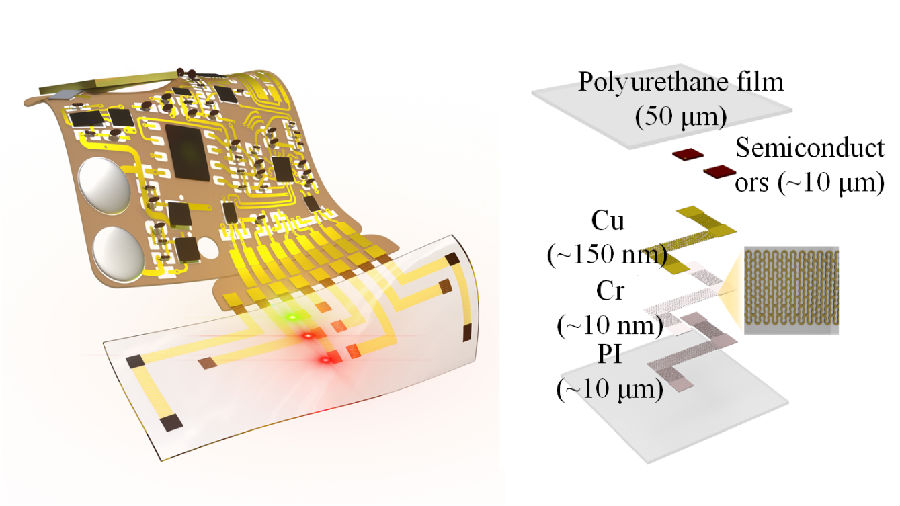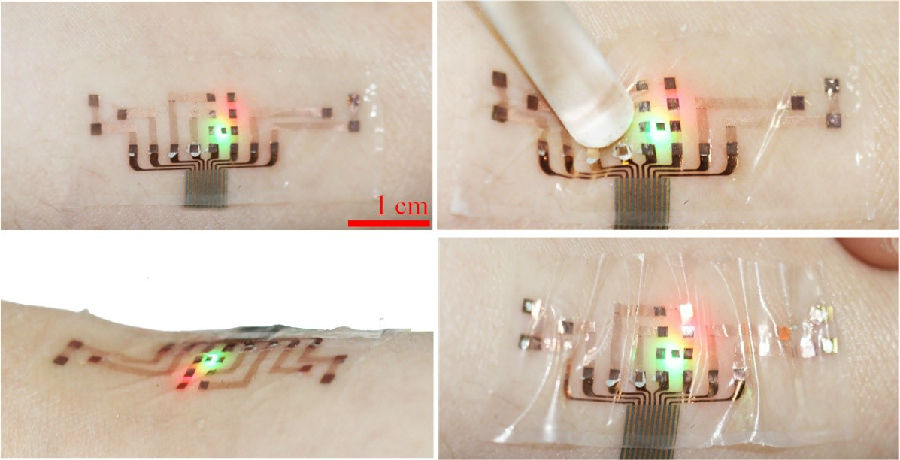Prof. Xue Feng group from School of Aerospace Engineering and Center of Flexible Electronics Technology, Tsinghua University, has developed skin-like integrated optoelectronic systems that can be mounted on the human skin for monitoring Continuous Noninvasive Arterial blood Pressure (CNAP) in the clinic, and wirelessly transmit the data to smart terminals in real time. In their paper titled “Wearable skin-like optoelectronic systems with suppression of motion artifact for cuff-less continuous blood pressure monitor”published on the National Science Review, the group presented the skin-like systems, ushering a novel strategy for CNAP measurement and a new route to achieve the long-term dynamic monitoring of blood pressure and blood oxygen.

Schematic illustration of the skin-like systems
Cardiovascular disease and its complications have become a great threat to human life and health. According to the statistics of the World Health Organization (WHO), an estimated 17.9 million people died from cardiovascular diseases per year, representing 31% of all global deaths. Currently, the blood pressure cuff is the most used, which is placed around the bare and stretched out upper arm and inflated until no blood can flow through the brachial artery. However, its inconvenience and lack of real-time measurement affect the quality of life as well as long-term compliance with self-monitoring. In conclusion, it’s still desirable to take great endeavor to breakthrough the key issues such as convenience and continuous measurement.

Optical images of the skin-like optoelectronics for monitoring CNAP
Prof. Xue Feng's research group has developed a optical principle based strategy for blood pressure monitoring and fabricated skin-like optoelectronic systems conformally and cozily adhesive to human body using biocompatible materials. By measuring the absorption of light with different wavelengths by the blood, the volume and velocity of blood can be measured to calculate blood pressure and blood oxygen.
Combined the foundation of mechanical research and design experience of flexible electronic devices, the group established a physical model via principles of virtual work for blood pressure measurement. They also proposed an optical path differential method based on multi-wavelength for suppressing the noise caused by motion artifacts. These works can measure the accurate pulse wave velocity with absolute error of less than 10 mmHg in clinical trials, compared with the invasive measurement.
Feng Xue's research group from Tsinghua University are dedicating to the research of stretchable / super-flexible and large-scale integration micro devices. The developed flexible electronic technologies have been applied to health care, intelligent perception and important equipment. The group has published a series of high-level paper on Science Advances, Advanced Materials, Advanced Functional Materials, Journal of the Mechanics and Physics of Solids and other journals.
Dr. Haicheng Li from Tsinghua University is the first author, and Professor Xue Feng is the corresponding author of the article. The team of Yuan Xu, director of Beijing Tsinghua Changgeng Hospital is also involved in the work. The research was supported by the National Basic Research Program of China and National Natural Science Foundation of China.

